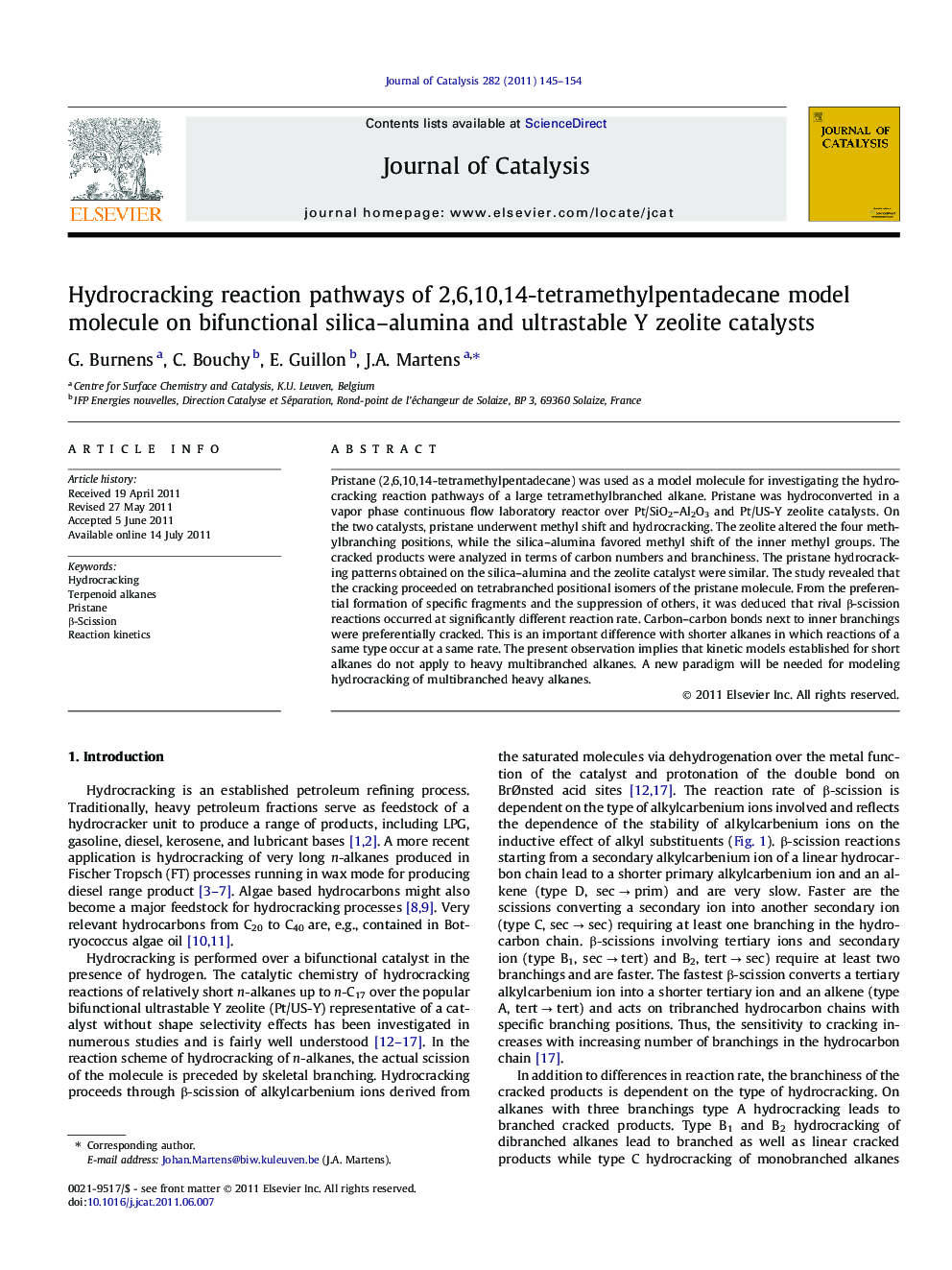| کد مقاله | کد نشریه | سال انتشار | مقاله انگلیسی | نسخه تمام متن |
|---|---|---|---|---|
| 61628 | 47593 | 2011 | 10 صفحه PDF | دانلود رایگان |

Pristane (2,6,10,14-tetramethylpentadecane) was used as a model molecule for investigating the hydrocracking reaction pathways of a large tetramethylbranched alkane. Pristane was hydroconverted in a vapor phase continuous flow laboratory reactor over Pt/SiO2–Al2O3 and Pt/US-Y zeolite catalysts. On the two catalysts, pristane underwent methyl shift and hydrocracking. The zeolite altered the four methylbranching positions, while the silica–alumina favored methyl shift of the inner methyl groups. The cracked products were analyzed in terms of carbon numbers and branchiness. The pristane hydrocracking patterns obtained on the silica–alumina and the zeolite catalyst were similar. The study revealed that the cracking proceeded on tetrabranched positional isomers of the pristane molecule. From the preferential formation of specific fragments and the suppression of others, it was deduced that rival β-scission reactions occurred at significantly different reaction rate. Carbon–carbon bonds next to inner branchings were preferentially cracked. This is an important difference with shorter alkanes in which reactions of a same type occur at a same rate. The present observation implies that kinetic models established for short alkanes do not apply to heavy multibranched alkanes. A new paradigm will be needed for modeling hydrocracking of multibranched heavy alkanes.
Hydrocracking modes of pristane (2,6,10,14-tetramethylpentadecane) reveal the need of a paradigm shift to cope with hydrocracking mechanisms of renewable hydrocarbon feedstock.Figure optionsDownload high-quality image (38 K)Download as PowerPoint slideHighlights
► Hydrocracking and hydroisomerization of pristane (2,6,10,14-tetramethylpentadecane) occur in parallel.
► Hydrocracking occurs preferentially next to inner methyl branching.
► Pristane is hydrocracked into very specific fragments.
Journal: Journal of Catalysis - Volume 282, Issue 1, 15 August 2011, Pages 145–154